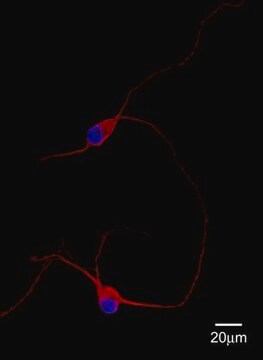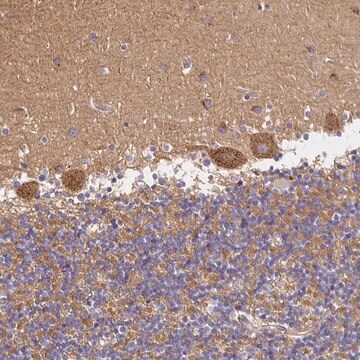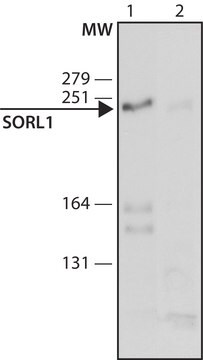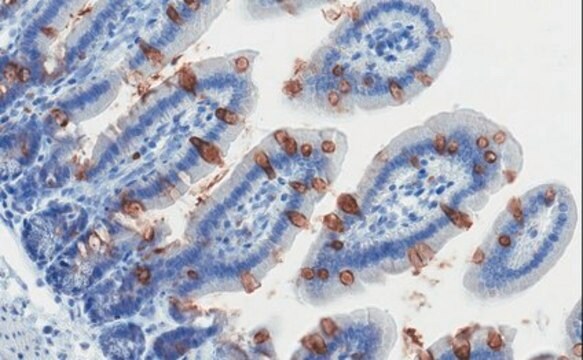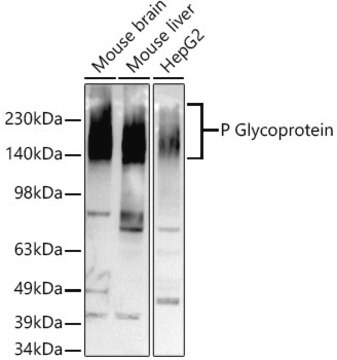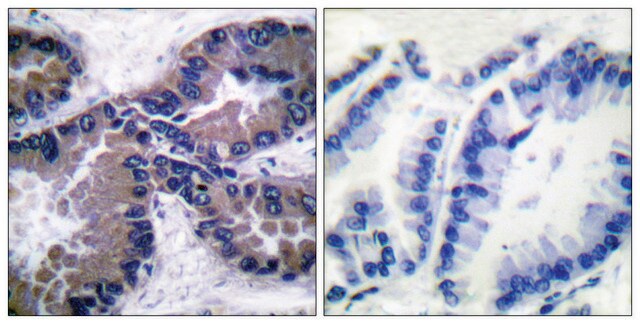MABN1793
Anti-SorLA Antibody, clone 20C11
clone 20C11, from mouse
Synonyme(s) :
Sortilin-related receptor, Gp250, LDLR relative with 11 ligand-binding repeats, Low-density lipoprotein receptor relative with 11 ligand-binding repeats, LR11, SorLA, SorLA-1, Sorting protein-related receptor containing LDLR class A repeats
About This Item
Produits recommandés
Source biologique
mouse
Niveau de qualité
Forme d'anticorps
purified immunoglobulin
Type de produit anticorps
primary antibodies
Clone
20C11, monoclonal
Espèces réactives
mouse, human
Technique(s)
ELISA: suitable
immunocytochemistry: suitable
western blot: suitable
Isotype
IgG1κ
Numéro d'accès NCBI
Numéro d'accès UniProt
Modification post-traductionnelle de la cible
unmodified
Informations sur le gène
human ... SORL1(6653)
Description générale
Spécificité
Immunogène
Application
Immunocytochemistry Analysis: A representative lot detected SorLA immunoreactivity primarily located at the cell body (soma) by fluorescent immunocytochemistry staining of 4% paraformaldehyde-fixed, 0.1% Triton X-100-permeabilized primary murine hippocampal neurons (Gustafsen, C., et al. (2013). J. Neurosci. 33(1):64-71).
Immunocytochemistry Analysis: A representative lot immunostained endocytic vesicular structures containing endocytosed sAPP by fluorescent immunocytochemistry staining of 4% paraformaldehyde-fixed, 0.1% Triton X-100-permeabilized HEK293 cells expressing exogenously transfected human SorLA (Gustafsen, C., et al. (2013). J. Neurosci. 33(1):64-71).
Immunocytochemistry Analysis: A representative lot detected the cellular localization of exogenously expressed wild-type and the FANSHY-to-6A4 mutant human SorLA by fluorescent immuncytochemistry staining of 4% paraformaldehyde-fixed, 0.5% saponin-permeabilized SH-SY5Y transfectants (Fjorback, A.W., et al. (2012). J. Neurosci. 32(4):1467-1480).
Western Blotting Analysis: A representative lot detected endogenous SorLA in sucrose gradient-fractionated mouse brain extracts as well as the expression of exogenously transfected human SorLA in HEK293 transfectants (Gustafsen, C., et al. (2013). J. Neurosci. 33(1):64-71).
ELISA Analysis: Representative lots were employed as the detection antibody for quantiating SorLA level in human brain cortical extracts as well as the level of exogenously expressed human SorLA in CHO cells (Caglayan, S., et al. (2012). Arch. Neurol. 69(3):373-379; Schmidt, V., et al. (2012). EMBO J. 31(1):187-200).
Qualité
Immunocytochemistry Analysis: 4.0 µg/mL of this antibody immunostained SorLA endocytic vesicles in HEK293 cells expressing transfected human SorLA.
Description de la cible
Forme physique
Autres remarques
Vous ne trouvez pas le bon produit ?
Essayez notre Outil de sélection de produits.
Code de la classe de stockage
12 - Non Combustible Liquids
Classe de danger pour l'eau (WGK)
WGK 1
Point d'éclair (°F)
Not applicable
Point d'éclair (°C)
Not applicable
Certificats d'analyse (COA)
Recherchez un Certificats d'analyse (COA) en saisissant le numéro de lot du produit. Les numéros de lot figurent sur l'étiquette du produit après les mots "Lot" ou "Batch".
Déjà en possession de ce produit ?
Retrouvez la documentation relative aux produits que vous avez récemment achetés dans la Bibliothèque de documents.
Notre équipe de scientifiques dispose d'une expérience dans tous les secteurs de la recherche, notamment en sciences de la vie, science des matériaux, synthèse chimique, chromatographie, analyse et dans de nombreux autres domaines..
Contacter notre Service technique